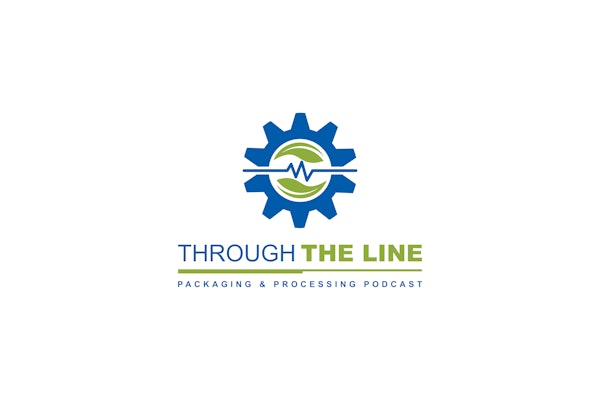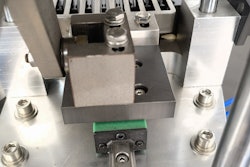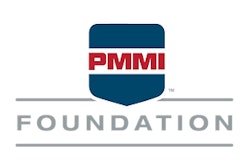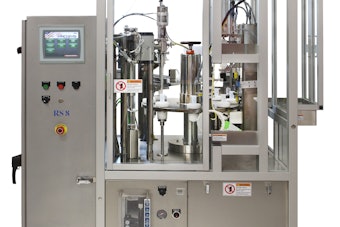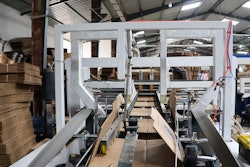Odin's Chris Fennig explained that cabinets' basic features include the ability to read all tags at once, ensuring that there are no null spots [voids or non-read zones] inside the cabinet, and that tags can be near each other on the products protected.
The use of RFID-enabled cabinet technology also presents a safety aspect, including monitoring for expiration as well as temperature tracking.
Unlike other methods, including conventional manual tracking, RFID-enabled cabinets are monitored 24/7, have a high degree of accuracy, permit access-level management and control, offer chain of custody verification, and minimize counterfeiting.
In one case study, Ryan Butterick of medical device provider Medtronic spoke regarding the use of RFID-enabled smart cabinets (see image) for its pouched, "heavily regulated" thoracolumbar products from its Memphis, TN-based Spinal and Biologics business unit. The products, used by surgeons, need to be kept within certain temperature thresholds. A pilot program using Terso's temperature-controlled cabinets at a hospital and distributorship replaces a labor-intensive verification methodology that involved manual-made photocopies, scans, uploads to its ERP system, and regular use of FedEx delivery. "The temperature controls information required by the FDA is collected automatically," Butterick said. "Our sales staff is very happy with the program because they can now spend more of their time promoting our products."
Another case study came from Dr. Adam Janette, a dental surgeon with San Luis Oral and Maxillofacial Surgery and Dental Implant Center, San Luis Obispo, CA, who partnered with dental supplies provider Neoss. The two-year smart cabinet program began after staff problems surrounding on-site availability of the 150 to 200 unique parts stored in inventory. The use of the RFID technology-including each staffer equipped with an RFID identification tag--as reduced inventory costs, provided automatic restocking, and virtually eliminated the need for overnight deliveries. "It's perfect for small, on-site stocking," said Janette.
In response to a concern about RFID "leakage" in hospitals, Fennig pointed out that the Terso cabinets provide a sealed RFID environment. Joe Pleshek, Terso's director of business development, announced that UHF Gen 2 RFID technology will be added to its 2.45 GHz RFID offerings.
Gordon Hamnett of Promega Corp., a life sciences reagent supplier, oversees PromegaExpress, an RFID-enabled inventory management and delivery system powered by Terso Solutions for on-site stocking. Promega has 500 Internet-enabled smart cabinets deployed worldwide, which are used to store its "smart-tagged" reagents that are otherwise difficult to restock via error-prone manual systems.
In this case study, Hamnett said benefits include automatic replenishment, 24/7 service and support, efficient shipments, and hourly inventory checks done automatically. "Supplies are reviewed to remove or add products based on demand," he added. "We're not the biggest player in our market, but this capability distinguishes us with an [unmatched] state-of-the-art solution." [HCP]
--By Rick Lingle, Technical and RFID Editor, Packaging World
The use of RFID-enabled cabinet technology also presents a safety aspect, including monitoring for expiration as well as temperature tracking.
Unlike other methods, including conventional manual tracking, RFID-enabled cabinets are monitored 24/7, have a high degree of accuracy, permit access-level management and control, offer chain of custody verification, and minimize counterfeiting.
In one case study, Ryan Butterick of medical device provider Medtronic spoke regarding the use of RFID-enabled smart cabinets (see image) for its pouched, "heavily regulated" thoracolumbar products from its Memphis, TN-based Spinal and Biologics business unit. The products, used by surgeons, need to be kept within certain temperature thresholds. A pilot program using Terso's temperature-controlled cabinets at a hospital and distributorship replaces a labor-intensive verification methodology that involved manual-made photocopies, scans, uploads to its ERP system, and regular use of FedEx delivery. "The temperature controls information required by the FDA is collected automatically," Butterick said. "Our sales staff is very happy with the program because they can now spend more of their time promoting our products."
Another case study came from Dr. Adam Janette, a dental surgeon with San Luis Oral and Maxillofacial Surgery and Dental Implant Center, San Luis Obispo, CA, who partnered with dental supplies provider Neoss. The two-year smart cabinet program began after staff problems surrounding on-site availability of the 150 to 200 unique parts stored in inventory. The use of the RFID technology-including each staffer equipped with an RFID identification tag--as reduced inventory costs, provided automatic restocking, and virtually eliminated the need for overnight deliveries. "It's perfect for small, on-site stocking," said Janette.
In response to a concern about RFID "leakage" in hospitals, Fennig pointed out that the Terso cabinets provide a sealed RFID environment. Joe Pleshek, Terso's director of business development, announced that UHF Gen 2 RFID technology will be added to its 2.45 GHz RFID offerings.
Gordon Hamnett of Promega Corp., a life sciences reagent supplier, oversees PromegaExpress, an RFID-enabled inventory management and delivery system powered by Terso Solutions for on-site stocking. Promega has 500 Internet-enabled smart cabinets deployed worldwide, which are used to store its "smart-tagged" reagents that are otherwise difficult to restock via error-prone manual systems.
In this case study, Hamnett said benefits include automatic replenishment, 24/7 service and support, efficient shipments, and hourly inventory checks done automatically. "Supplies are reviewed to remove or add products based on demand," he added. "We're not the biggest player in our market, but this capability distinguishes us with an [unmatched] state-of-the-art solution." [HCP]
--By Rick Lingle, Technical and RFID Editor, Packaging World



